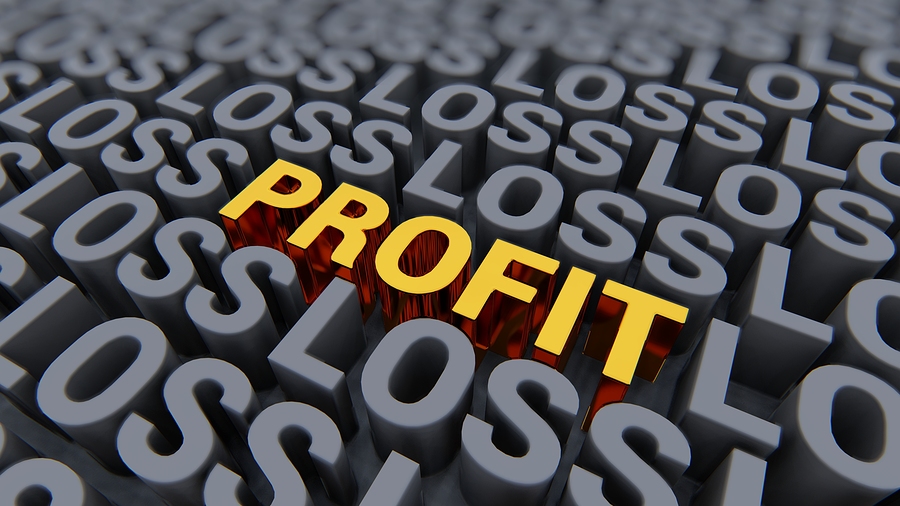
Published: December 19th, 2019 in Business
When you are first starting out in a business it can be difficult to comprehend your accounts, especially if you have never worked with business accounts previously. Some people might be tempted to leave all this up to their accountant and rely on them to keep the company updated about key financial matters, but in doing so they would be depriving themselves of the ability to really understand how their business is performing, both in the short and long term.
Not only is a good knowledge of how your accounts work critical to ensure that your key financial information is being recorded correctly, but being able to understand your accounts gives you valuable insights into the health and prospects of your company.
When looking at your accounts, there will be two main parts that you need to be able to analyse and act on – these are your ‘Profit and Loss’, and your ‘Balance Shet’.
Profit And Loss
A profit and loss statement shows the income generated by your company alongside how much it has spent in a certain timescale.
Profit and loss statements (usually abbreviated to a “P & L”) can be run over any time period, but they are commonly run every month as part of your “Management accounts”, as well as every financial year in order to calculate any tax you may owe.
When looking at your accounts, the first thing you want to do is look at your profit figure to see if you are making a profit, and if the figure looks accurate and is in line with your expectations.
Looking at your profit and loss account, scroll down to the bottom and the final figure will display either a positive or negative figure. This shows whether or not you are in profit or making a loss. You can then look at the top figure, which represents sales, and then browse through your expenses to look for any valuable insights on how you can save any money and boost those all-important profits.
For example:
Say your bottom figure is £15,000 in profit, and your top figure is £100,000 in sales. You divide the profit by the sales, which in this case gives you 0.15, meaning that for every £1 of income you have, you are generating a profit of 15p.
You can use this figure against your business plan and projections to see how your company is performing.
Is a 15% net profit margin on track for what you had hoped for at this point? Or do you need to make some changes in order to see better returns?
Where Is The Rest Of Your Money?
Looking at your profit figure, you may see that you have considerably more money listed than you can actually see in your bank account. This is normal and does not mean that your calculations are wrong. There are a number of reasons that your physical balance may not reflect your profit, including:
- Customers paying late
- Paying suppliers early
- Taking cash or dividends out since putting your accounts statement together
- Purchasing supplies or equipment
Understanding Your Balance Shet
Your balance sheet will represent the following:
Assets = Liabilities + Shareholders’ Funds
Key Fact: This is a fundamental equation in the accounting world and understanding it will enable you to decipher many more types of reports, not just the profit and loss and balance sheet statements.
Assets include:
- Cash
- Stocks/Inventories
- Property
- Temporary Investments
- Long-Term Investments
- Furniture
- Fixtures
- Vehicles
- Land
Assets also include what is referred to as ‘goodwill’, which is the difference between the value of the assets that you own and the price you paid for them. Although this isn’t a tangible financial asset, it will still be included.
Liabilities refer to debts and obligations that you or your company owes to someone else These will include:
- Loans
- Mortgages
- Accounts Payable
- Unearned Premiums
- Earned Premiums
- Expenses
You will add up everything that is owed in liabilities and subtract that from the total of everything owned in assets, and the number which is left is the amount of money that belongs to the shareholders.
When looking at your balance sheet, the last number (usually called capital and reserves), is what you should pay close attention to.
If this is a positive number then this means that your business owns more than it owes, which is obviously a good thing!
If it is negative it means that the business, at that precise moment in time, did not have enough money to meet all of its liabilities. Long term this is not a healthy position to be in, but if it quite normal for a business, during its lifetime, to slip occasionally into a negative position. So, it is not always a situation that needs urgent attention – as long as you understand why it has done so and know how to navigate out of it.
A balance sheet is one of the main financial report used by accountants and business owners, as it shows you, in black and white:
- How much you owe your creditors, and
- How much you are owed by your customers
Knowing this information is key to understanding whether your business is on a sound financial footing, and that its long-term prospects are positive.
Debt-To-Equity Ratio
Another important sum to look at on your accounts is the debt-to-equity ratio. A company’s assets may be sourced in two ways:
- From creditors through loans and other forms of finance
- From shareholders through share capital and retained profits
A business may measure its strength using a ratio of these two forms of assets as, whilst a creditor could always call in a debt at any time, the equity provided by shareholders is lifelong. Companies who have high levels of debt over funds provided by shareholders are said to be highly ‘leveraged’ or ‘geared’.
The formula for debt-to-equity is:
Debt-To-Equity Ratio = Total Liabilities/Total Shareholders’ Funds
Different levels of debt-to-equity will be appropriate for different businesses, so for the most part they cannot be compared with others. To make sure that your debt-to-equity ratio is healthy for your business you can ask yourself the following questions:
- Is the company in profit and generating plenty of ready cash?
- Are the interest rates on any loans fixed or variable?
- Is the company protected by a strong brand?
- Are the cash flow and revenue streams predictable?
- How quickly does any debt need to be repaid?
- What are the chances of the company failing due to poor economic conditions in the industry it is based?
Current Ratio
Another important way to identify and measure the financial health of a company is to look at the current ratio. This focuses more on the short-term financial health of the company and how likely it is to meet its more immediate financial obligations. This will usually just look at calculations for a span of around a year.
Current Ratio = Current Assets/Current Liabilities
This simple calculation should add up to more than one for your company to be considered financially solvent. A total of one or more indicates that, should all of your financial obligations be called in at once, you would still be able to pay for them without having to take out new lines of credit.
Summing Up
In most small businesses the managers are usually also the owners and it is commonly the case that they have to juggle an enormous amount of responsibilities.
It is the case that many business owners have no knowledge of what a P&L report or a balance sheet is, and they don’t have the time to learn either as their time is spent on making sure the business is successful on a day to day basis.
However, we would strongly advise any owner or manager to become familiar with them. As well as having to ensure success for the business on a day to day basis, they have to make sure the long term foundations are strong and the only was to be able to do this is to be able to interpret and act on these types of financial report that your accountant will produce for you.
The team at TFMC can look after all your accounting needs and will always be on hand to help you understand and analyse the financial health of your business. Please get in touch with one of our qualified advisors at TFMC today on 08004704820 or email us at [email protected] to find out more.


